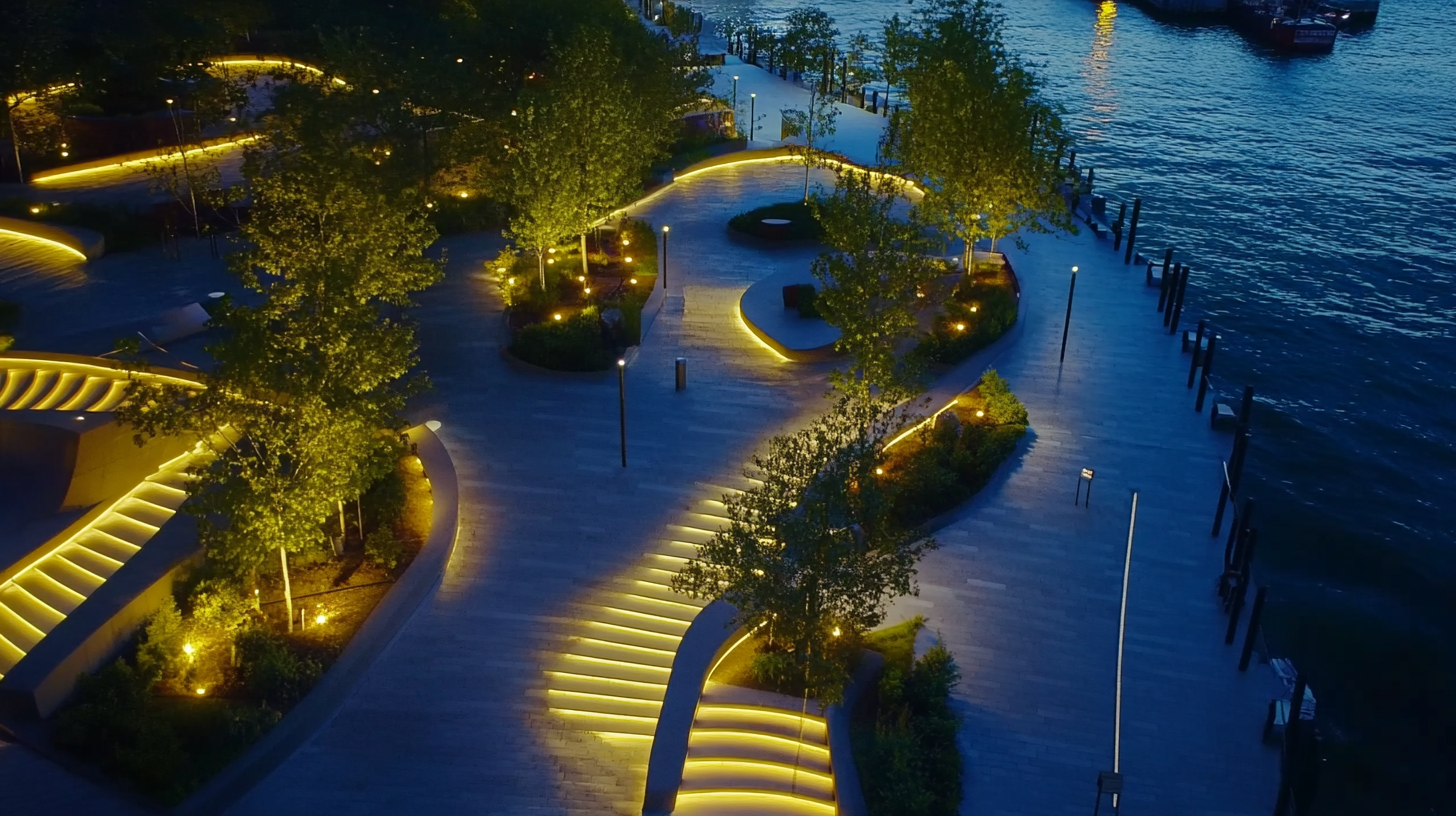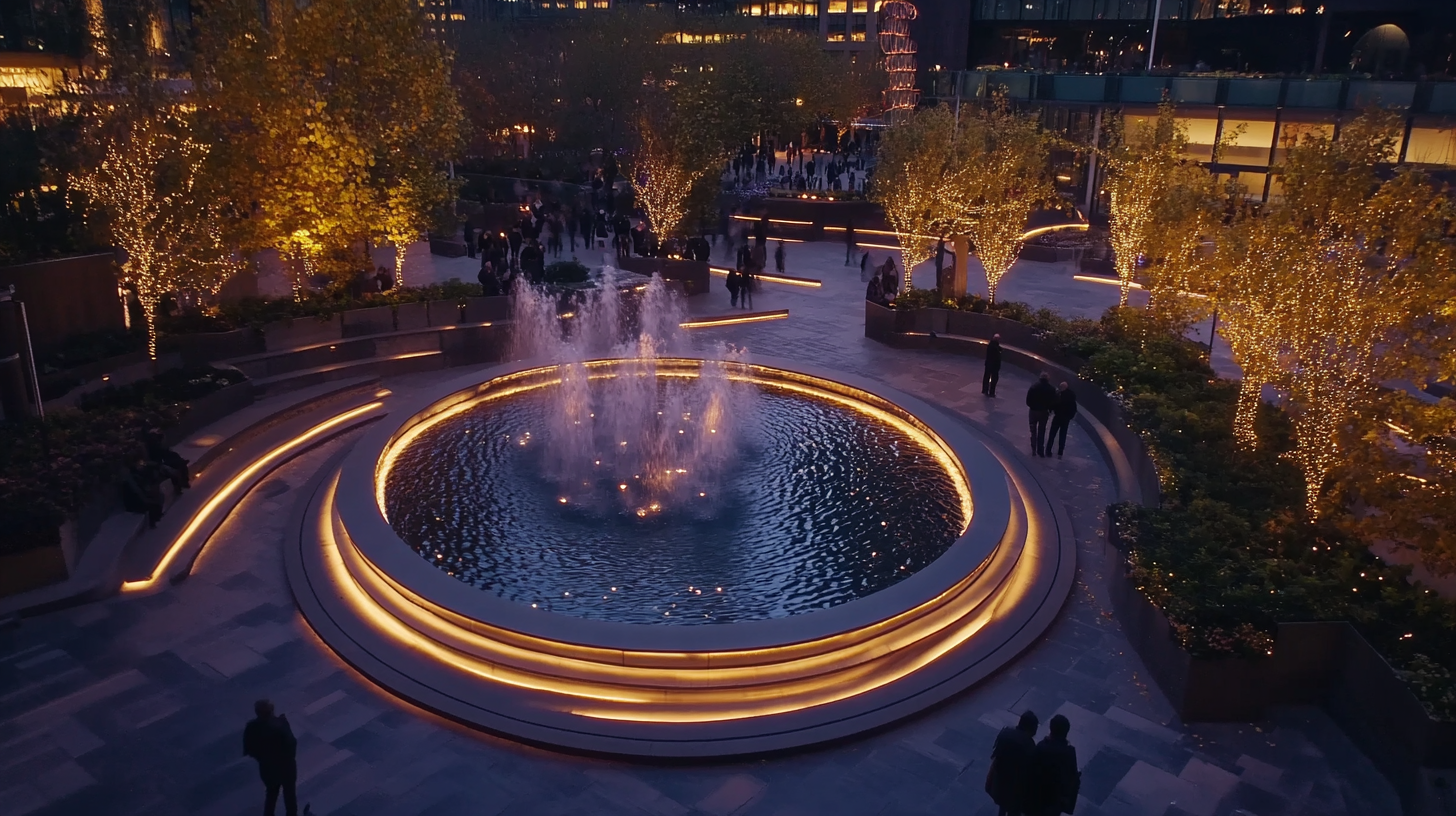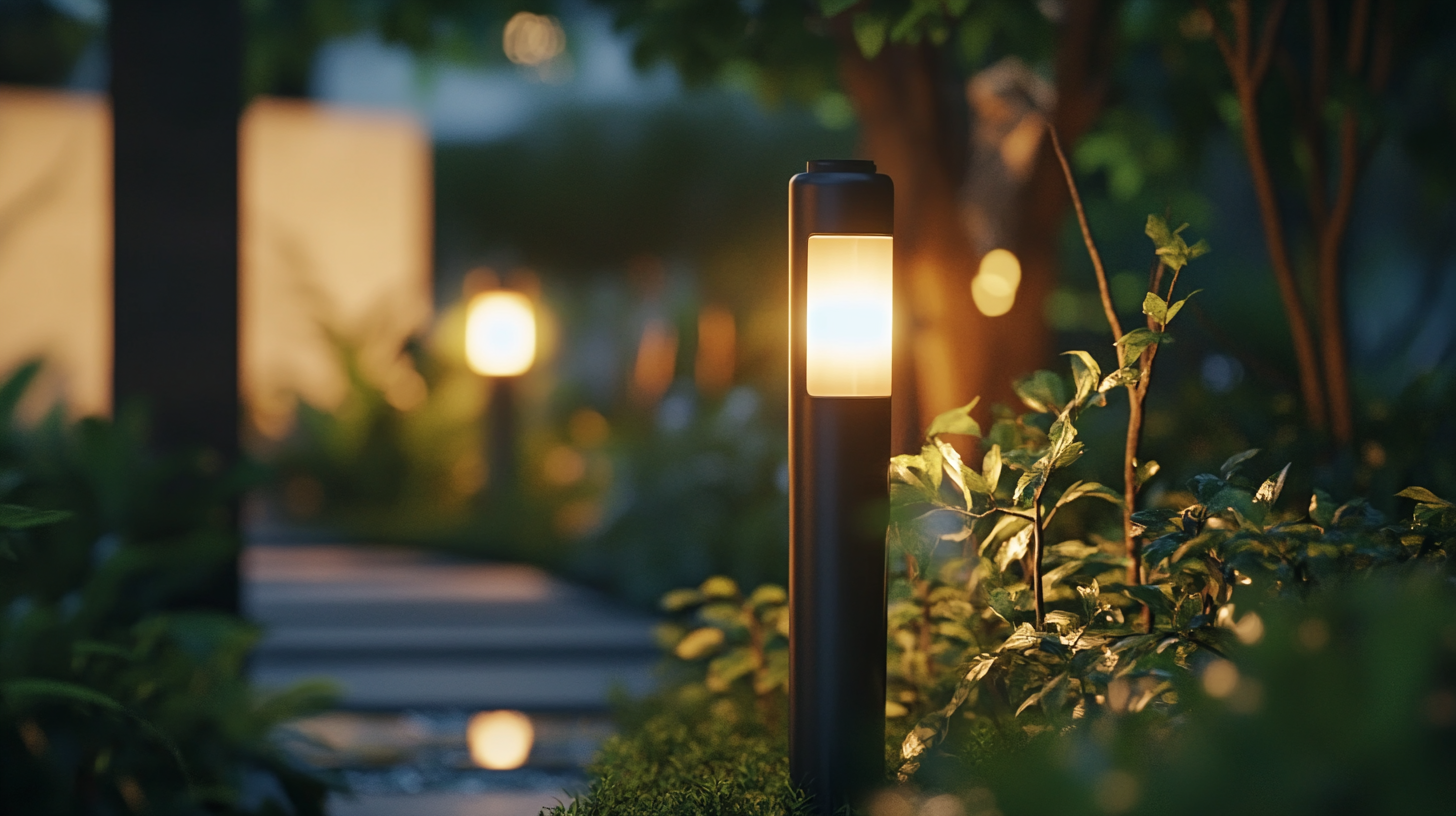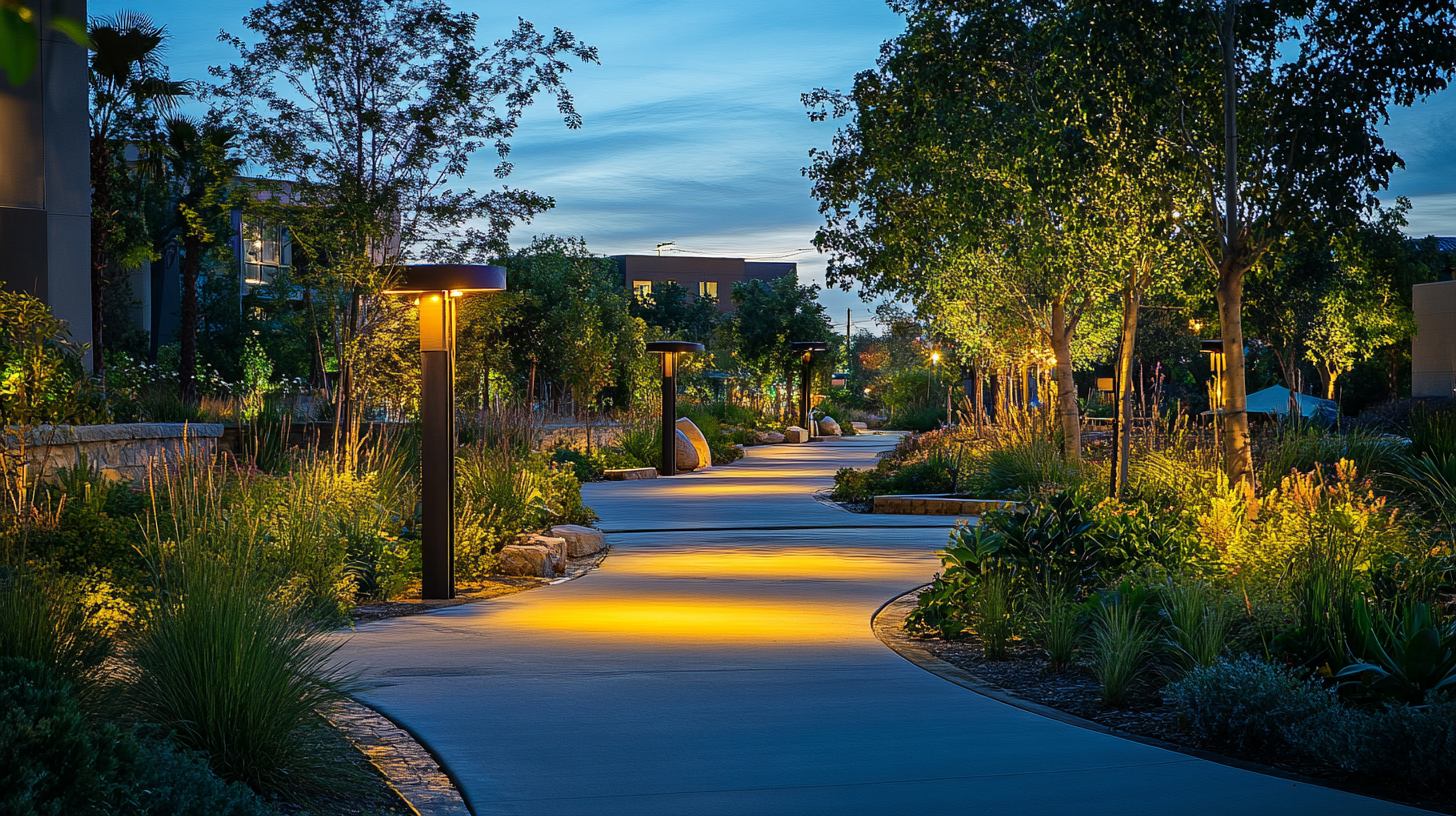Edison LED Lighting
Projects
Unlocking the Potential of Landscape Lighting for Sustainable Outdoor Spaces Worldwide
In the rapidly evolving landscape of outdoor design, landscape lighting is increasingly recognized as a crucial element in creating sustainable outdoor spaces. According to a report by the International Dark-Sky Association, approximately 30% of outdoor lighting is misdirected, contributing to light pollution and energy waste. However, advancements in energy-efficient technologies, such as LED lighting, are transforming landscape lighting into a tool for sustainability, reducing energy consumption by up to 75%. This shift not only enhances the aesthetic appeal of outdoor environments but also promotes ecological balance and preserves biodiversity.
Moreover, a study conducted by the U.S. Department of Energy emphasizes that the integration of strategically designed landscape lighting can significantly enhance the usability of outdoor areas, encouraging social interaction and community engagement during evening hours. As urban areas expand and more people seek ways to connect with nature, the role of landscape lighting becomes pivotal in fostering these connections while prioritizing environmental sustainability. By harnessing the potential of landscape lighting, we can create vibrant, sustainable outdoor spaces that cater to both social needs and ecological responsibilities worldwide.

The Importance of Sustainable Landscape Lighting in Modern Outdoor Design
Sustainable landscape lighting plays a crucial role in modern outdoor design, transforming spaces while minimizing environmental impact. As urban areas evolve, the need for innovative lighting solutions becomes paramount. Sustainable lighting incorporates energy-efficient technologies, such as LED fixtures, which consume significantly less power than traditional options. This not only reduces electricity bills but also contributes to lower carbon emissions, making it a responsible choice for the planet. Moreover, sustainable landscape lighting enhances the safety and aesthetic appeal of outdoor areas. Thoughtfully designed lighting can illuminate pathways, highlighting natural features and creating inviting atmospheres for gatherings. By utilizing motion sensors and timers, we can further optimize energy use, ensuring that lights are only active when needed. This balance of functionality and eco-friendliness aligns with the principles of sustainable design, promoting a harmonious relationship between built environments and nature. Additionally, sustainable landscape lighting fosters biodiversity by creating minimally invasive systems that support nocturnal wildlife. By using fixtures that reduce light pollution, we can protect local ecosystems while allowing people to enjoy their outdoor spaces responsibly. As we strive for greener living, integrating sustainable lighting solutions in landscape design becomes essential, paving the way for a more sustainable future in our communities.

Innovative Technologies Transforming Landscape Lighting for Eco-Friendly Use
In recent years, innovative technologies have begun to revolutionize landscape lighting, aligning it with eco-friendly practices and sustainable living. A notable advancement is in the realm of bioluminescent plants which are being researched for their potential to illuminate outdoor spaces naturally. By harnessing the unique properties of these plants, designers can not only reduce energy consumption but also create striking visual experiences that blend seamlessly into the environment, offering a sustainable alternative to traditional lighting methods.
Moreover, addressing the growing concern of light pollution is essential for the ecological balance. Solutions aimed at creating more effective lighting designs can significantly mitigate the negative impacts of artificial light on wildlife and natural habitats. By prioritizing technologies that minimize light pollution, landscape architects and urban planners can foster outdoor spaces that enhance not just aesthetic appeal but also ecological integrity.
Additionally, integrating sustainable practices into landscape lighting involves utilizing renewable energy sources such as solar-powered systems. This shift not only lessens reliance on non-renewable energy but also demonstrates a commitment to fostering greener communities. With these innovative technologies and sustainable approaches, landscape lighting can truly transform outdoor spaces, making them environmentally friendly and visually captivating.

Design Strategies for Integrating Landscape Lighting with Natural Surroundings
Integrating landscape lighting with natural surroundings can profoundly enhance the aesthetic and functional qualities of outdoor spaces. The key to creating a harmonious environment lies in using design strategies that respect and emphasize the existing landscape. By employing subtle lighting techniques such as soft up-lighting for trees and down-lighting for pathways, we can create inviting atmospheres that highlight the beauty of nature without overpowering it. This approach not only showcases the unique features of the landscape but also encourages outdoor engagement during the evening hours.
Another effective strategy is the implementation of smart lighting systems that adapt to natural light levels throughout the day. These systems can significantly reduce energy consumption while ensuring that outdoor spaces remain safe and visually appealing. Incorporating solar-powered lights is another sustainable choice, blending functionality with a commitment to environmental stewardship. By selecting fixtures that are designed to mimic natural elements and colors, landscape lighting can enhance the beauty of outdoor areas in a way that feels organic and unobtrusive.
Furthermore, collaboration with landscape architects can lead to innovative designs that seamlessly integrate lighting within the overall environment. This partnership allows for a comprehensive understanding of plant growth, seasonal changes, and ecological considerations while illuminating areas to create distinct focal points and safe pathways. By thoughtfully considering the interplay of light and natural elements, we can cultivate sustainable outdoor spaces that resonate with their surroundings and promote a deeper connection to nature.

The Role of Energy Efficiency in Enhancing Landscape Lighting Solutions
In recent years, energy efficiency has become a pivotal factor in enhancing landscape lighting solutions. As urban spaces continue to expand worldwide, the need for sustainable outdoor lighting has never been more critical. Outdoor solar LED lighting is at the forefront of this transformation, offering innovative solutions that not only reduce energy consumption but also decrease carbon footprints. These systems harness sunlight during the day, providing a renewable source of energy that powers illuminating designs throughout the night.
The growth of the outdoor solar LED market underscores the importance of renewable energy sources in our daily lives. As more municipalities and businesses recognize the benefits of solar-powered solutions, the shift towards energy-efficient landscape lighting becomes increasingly apparent. With advancements in technology, today's solar LEDs boast improved efficiency, longer lifespan, and more versatile designs. This combination allows for creative landscape lighting that enhances aesthetic appeal while maintaining ecological responsibility, ensuring that outdoor spaces remain inviting and sustainable.
Moreover, investing in energy-efficient landscape lighting can significantly contribute to cost savings over time. Lower energy bills and reduced maintenance costs make solar LED options an economically sound choice for both private and public sectors. As the market for outdoor solar LEDs expands, it encourages a broader adoption of sustainable practices that benefit the environment and communities alike. By prioritizing energy efficiency in landscape lighting solutions, we unlock the potential for vibrant, sustainable outdoor spaces that can thrive in harmony with nature.
Case Studies: Successful Implementation of Sustainable Landscape Lighting Around the Globe
Sustainable landscape lighting is redefining outdoor spaces across the globe, showcasing how innovative design can harmonize with nature. In cities like Amsterdam, the integration of solar-powered LED lights has transformed public parks into vibrant night-time hubs while minimizing energy consumption. These lights not only illuminate pathways but also highlight natural features, encouraging residents to engage with their surroundings after dark. The use of renewable energy sources in lighting design exemplifies how urban spaces can prioritize sustainability while enhancing aesthetic appeal.
In Australia, a community-led initiative has demonstrated the power of biophilic design in landscape lighting. By utilizing smart technology, such as motion sensors and timers, residents have significantly reduced nighttime light pollution, allowing local wildlife to thrive. This approach not only preserves local ecosystems but also fosters a sense of community among residents who actively participate in making their neighborhoods more environmentally friendly. The project serves as a case study for other regions aiming to balance human activity with ecological responsibility.
Meanwhile, in Japan, traditional garden lighting has been reimagined through the use of energy-efficient fixtures that mimic natural light sources. This blend of cultural heritage and modern technology creates captivating outdoor spaces that encourage tranquility and reflection. As municipalities worldwide take note of these successful implementations, they’re inspired to invest in sustainable landscape lighting solutions that respect local traditions and promote environmental stewardship. Each case highlights the potential for landscape lighting to enhance outdoor spaces while contributing to a more sustainable future.

